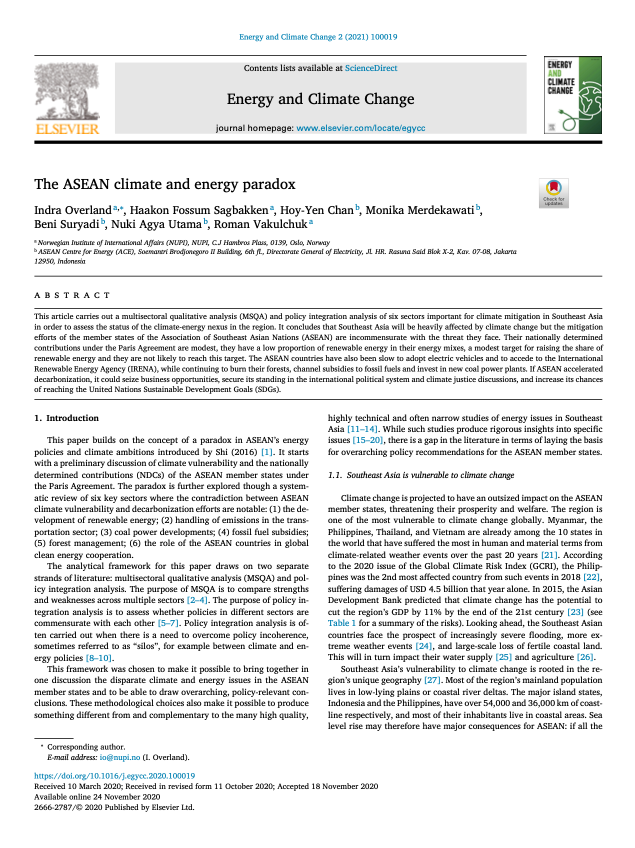
Keyword(s)
Author(s)
Indra Overland (a), Haakon Fossum Sagbakken (a), Hoy-Yen Chan (b), Monika Merdekawati (b), Beni Suryadi (b), Nuki Agya Utama (b), Roman Vakulchuk (a)
Country(ies)
Publisher
Published Date
Access
DOI
(a) Norwegian Institute of International Affairs (NUPI), NUPI, C.J Hambross Plass, 0139, Oslo, Norway
(b) ASEAN Centre for Energy (ACE), Soemantri Brodjonegoro II Building, 6th fl., Directorate General of Electricity, Jl. HR. Rasuna Said Blok X-2, Kav. 07-08, Jakarta 12950, Indonesia
This article carries out a multisectoral qualitative analysis (MSQA) and policy integration analysis of six sectors important for climate mitigation in Southeast Asia in order to assess the status of the climate-energy nexus in the region. It concludes that Southeast Asia will be heavily affected by climate change but the mitigation efforts of the member states of the Association of Southeast Asian Nations (ASEAN) are incommensurate with the threat they face. Their nationally determined contributions under the Paris Agreement are modest, they have a low proportion of renewable energy in their energy mixes, a modest target for raising the share of renewable energy and they are not likely to reach this target. The ASEAN countries have also been slow to adopt electric vehicles and to accede to the International Renewable Energy Agency (IRENA), while continuing to burn their forests, channel subsidies to fossil fuels and invest in new coal power plants. If ASEAN accelerated decarbonization, it could seize business opportunities, secure its standing in the international political system and climate justice discussions, and increase its chances of reaching the United Nations Sustainable Development Goals (SDGs).
Cite:
Overland, I., Sagbakken, H.F., Chan, H.-Y., Merdekawati, M., Suryadi, B., Utama, N.A., Vakulchuk, R., 2021. The ASEAN climate and energy paradox. Energy and Climate Change 2, 100019.